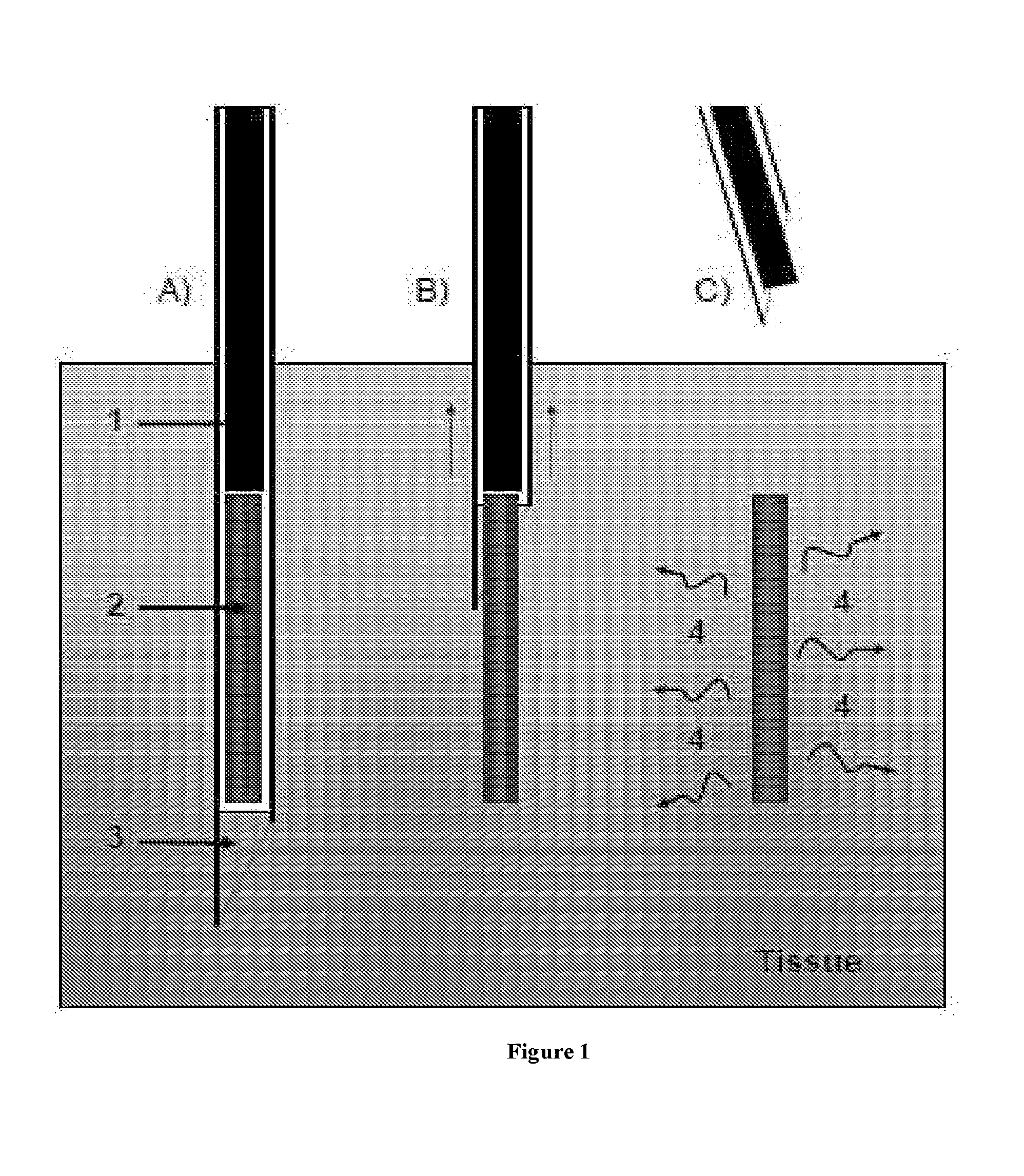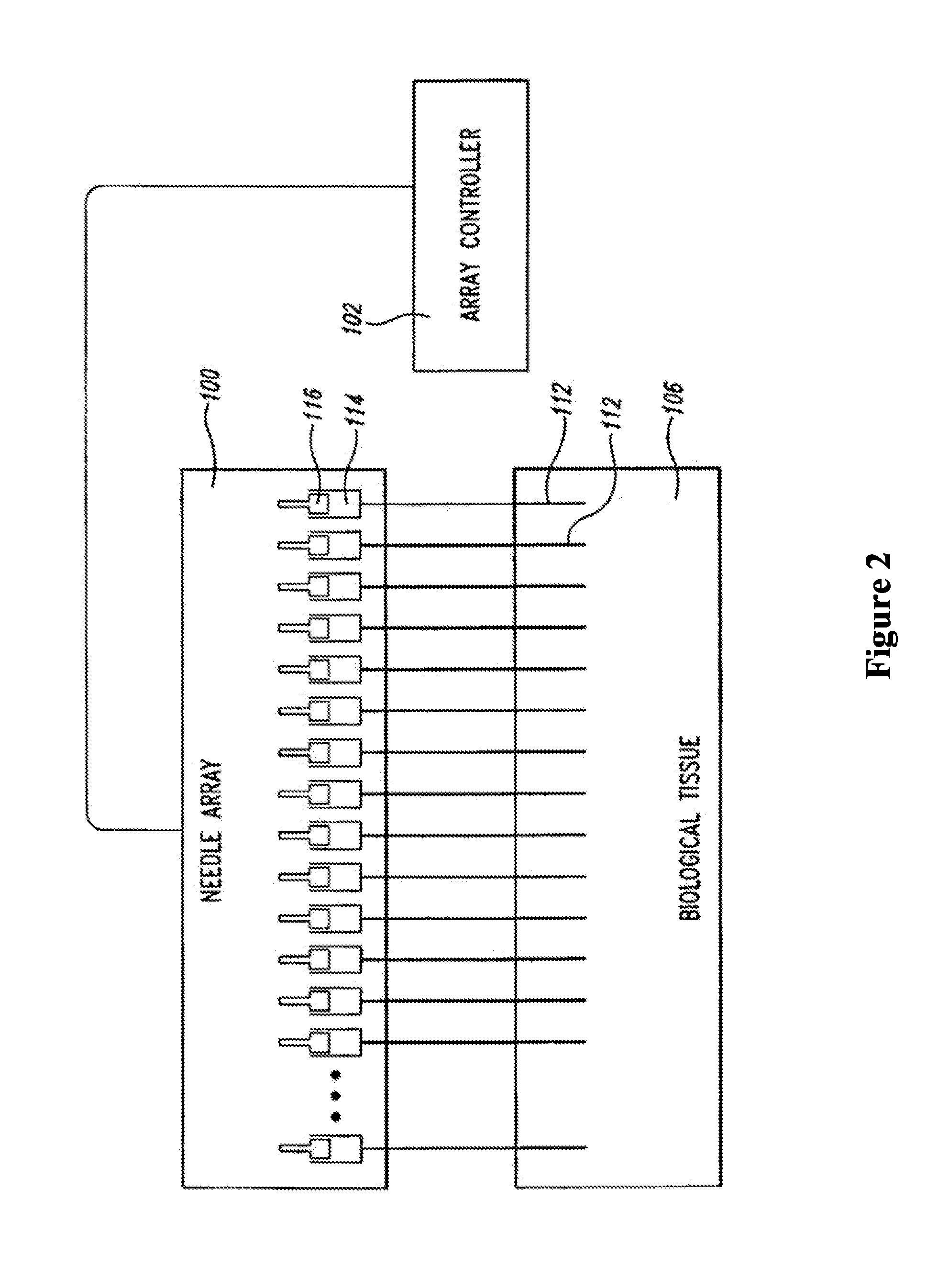Therapeutic methods and compositions for solid delivery
a technology of compositions and therapeutic methods, applied in the direction of antibacterial agents, immunological disorders, metabolism disorders, etc., can solve the problems of high failure rate in phase iii trials, cost of new drug development from discovery, and the failure rate of most of them to advan
- Summary
- Abstract
- Description
- Claims
- Application Information
AI Technical Summary
Benefits of technology
Problems solved by technology
Method used
Image
Examples
example 1
Spatially Restricted Delivery of Dye at Multiple Tumor Depths
[0357]Doxorubicin was delivered to a lymphoma tumor using a porous tube of the method. The tumor was then excised and sectioned. FIG. 8 shows a slice of the tumor, imaged using fluorescence and brightfield microscopy. These images show that doxorubicin fluorescence overlaps with the region of dead cells discernible in the brightfield image. Regions of doxorubicin fluorescence and cell death are localized to a zone within the tumor slice, reflecting spatially constrained doxorubicin delivery. FIG. 9 shows three tumor cross-sectional slices from different depths, and demonstrates that the localized delivery depicted in FIG. 8 extends to various tumor depths. Cell death was observed in a localized area across the three tumor depths shown.
[0358]Spatially restricted delivery was tested by injecting four different volumes of a fluorescent dye using a needle array. The dye was injected along four parallel axes within a tumor. FIG...
example 2
Comparison of In Vivo and In Vitro Analyses
[0360]Sonic hedgehog (Shh) antagonists were tested in vitro and in vivo, and the results were compared. FIG. 11 illustrates an in vitro response to hedgehog pathway antagonism in a human medulloblastoma sample. Medulloblastoma cells were taken from three patients and cultured in vitro. Samples from the three patients, MB1-MB3, were tested for the effect of Shh antagonists, which showed no response compared to positive control in this study. Bars A) depicts injection of 1 μM of SHH antagonist; Bars B) injection of 5 μM SHH antagonist; and Bars C) injection of a positive control.
[0361]In contrast to the results of the in vitro experiment shown in FIG. 11, FIG. 12 illustrates the response of Shh antagonist injection to a tumor in vivo. Shh antagonists were injected in the tumor in a spatially-restricted fashion, using the method of the invention, and visualized by fluorescent microscopy. FIG. 12 shows brightfield microscopy of localized positi...
example 3
Spatially-Restricted Delivery of Nucleic Acids
[0363]Spatially-restricted delivery of nucleic acid molecules was tested using the present method. A HT29 colon tumor xenograft was injected with lentivirus bearing a promoter driving GFP expression. FIG. 15 illustrates fluorescent microscopy of a whole tumor slice following spatially-restricted injection of GFP-expressing lentivirus. Panel A shows that GFP expression was localized to the region of injection. Panel B shows magnification of the virus infusion zone.
[0364]The method was then applied for spatially restricted RNA interference (RNAi). A small hairpin RNAi (shRNA) construct within a lentivirus was locally delivered to a mouse tumor. The shRNA was directed against KIF11, an essential gene for tumor cell mitosis. A control construct with no knockdown ability was also used. As an additional control, GFP virus alone was injected. These three constructs were injected at three different locations within the tumor, and localized effec...
PUM
 Login to View More
Login to View More Abstract
Description
Claims
Application Information
 Login to View More
Login to View More - R&D
- Intellectual Property
- Life Sciences
- Materials
- Tech Scout
- Unparalleled Data Quality
- Higher Quality Content
- 60% Fewer Hallucinations
Browse by: Latest US Patents, China's latest patents, Technical Efficacy Thesaurus, Application Domain, Technology Topic, Popular Technical Reports.
© 2025 PatSnap. All rights reserved.Legal|Privacy policy|Modern Slavery Act Transparency Statement|Sitemap|About US| Contact US: help@patsnap.com



